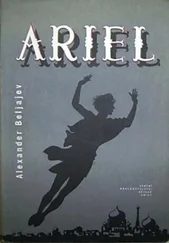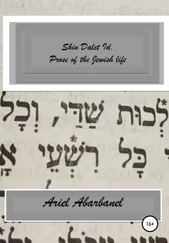Ariel Toaff - Blood Passover
Здесь есть возможность читать онлайн «Ariel Toaff - Blood Passover» весь текст электронной книги совершенно бесплатно (целиком полную версию без сокращений). В некоторых случаях можно слушать аудио, скачать через торрент в формате fb2 и присутствует краткое содержание. Жанр: Религиоведение, на английском языке. Описание произведения, (предисловие) а так же отзывы посетителей доступны на портале библиотеки ЛибКат.
- Название:Blood Passover
- Автор:
- Жанр:
- Год:неизвестен
- ISBN:нет данных
- Рейтинг книги:3 / 5. Голосов: 1
-
Избранное:Добавить в избранное
- Отзывы:
-
Ваша оценка:
- 60
- 1
- 2
- 3
- 4
- 5
Blood Passover: краткое содержание, описание и аннотация
Предлагаем к чтению аннотацию, описание, краткое содержание или предисловие (зависит от того, что написал сам автор книги «Blood Passover»). Если вы не нашли необходимую информацию о книге — напишите в комментариях, мы постараемся отыскать её.
Blood Passover — читать онлайн бесплатно полную книгу (весь текст) целиком
Ниже представлен текст книги, разбитый по страницам. Система сохранения места последней прочитанной страницы, позволяет с удобством читать онлайн бесплатно книгу «Blood Passover», без необходимости каждый раз заново искать на чём Вы остановились. Поставьте закладку, и сможете в любой момент перейти на страницу, на которой закончили чтение.
Интервал:
Закладка:
Maestro Valco, paid by Salomone, moved to Constantinople, and went quickly to work, but apparently with little result. Mahomet II was still alive and kicking when the Jewish banker from Piove finally died, between the end of 1475 and the very early part of the following year. But Salamone was occupied with certain other matters, much more serious and more disagreeable then merely "taking the life of the Great Turk" during that period, which was to prove fraught with danger for all the Jewish communities of northern Italy. The Trent trials of the Jews accused of little Simon’s martyrdom had ended with the condemnation and execution of the principal defendants, who were burnt at the stake or decapitated in June of 1475. Other defendants, including the women of the small community, were waiting to learn their final fate, after which the trial proceedings were suspended in April by order of Sigismundo IV, Count of Tyrol, and were then newly interrupted the following July by order of Pope Sixtus IV after a brief recommencement, requested by several parties for purposes of intervening in the affair. The Pope then personally sent a special commissioner to Trent, the Dominican, Battista de’ Giudici, bishop of Ventimiglia, with the task of investigating and
p. 33]
reporting on the facts. De’ Giudici, who had initially taken up lodgings at Trent, later moved to the nearby, but more secure, seat of Rovereto, in territory belonging to Venice, where they met with the lawyers, all of top rate importance, whom the Jews of Padua had decided to make available to the defendants [73] On these events, see Esposito and Qualiglioni, Processi , cit., vol. I, pp. 1-51. Among the defense attorneys acting for the Trent defendants was Antonio Capodilista, one of the most illustrious jurists in Padua (cfr. ibidem, pp. 447-454).
. Salomone da Piove played a prominent role in the affair, requesting the Pope to appoint an apostolic inquisitor and probably meeting Battista de' Giudici at Padua, on de’ Giudici’s way to Trent [74] Cfr. Nissim, I primordi della stampa ebraica nell'Italia Settentrionale , cit., pp. 12-13.
.
In accordance with de' Giudici, with whom he maintained intense epistolary relations, as well as through another Jew from Piove, belonging to the Cusi family of typographers, having strategically moved, to Rovereto, Salomone provided a safe conduct to a Paduan Jew, a native of Regensburg, and sent him to Innsbruck with the mission of pleading the cause of the Trent defendants still in prison, before Sigismundo, Count of Tyrol, and, if possible, obtaining their release. Salomone Fürstungar, his agent on this delicate mission, was an unscrupulous intriguer who camouflaged himself by dressing, not as a Jew, but "in the German-style, with a short overcoat and a cap on his head", returned from Tyrol disappointed and empty-handed. His bitter failure was also an indication of the failure of the efforts of all the German-origin Jewish communities from the Veneto region to avoid the tragic consequences of the Trent affair for the defendants who were still alive [75] "Salomon [Fürstungar] ivert ad Illustriss. Principem Ducem Austriae [...] et Salomon dixit res male succebat, quia persuasum erat Illustriss. Principi quod deberet pati quod iustitia haberet suum locum et quod, si volebat quod justitia haberet suum locum, erat necesse quod procedatur contra Judeos incarceratos, et hoc ut sciretur an praedicti Judaei incarcerati essent culpabiles vel inculpabiles, et quod si reperirentur inculpabiles relaxarentur, et si culpabiles punirentur. Et quo ex ista ratione Illustriss. Princips noluerunt mandare quod praedicti Judaei incarcerati relaxarentur". ["Salomon [Fürstungar] turned to the Prince Duke of Autria […] and Salomon said that things were going very badly, because the Illustrious Prince was convinced that justice should be done and that, if he wished justice to be done, it was necessary to proceed against the imprisoned Jews, and a determination should be made as to their guilt or innocence, and that if they were innocent, they should be released, and that if they were guilty they should be punished. And it was for this reason that the Illustrious Prince did not wish to release the aforementioned Jews from prison”]. Cfr. [Benedetto Bonelli], Dissertazione apologetica sul martirio del beato Simone da Trent nell'anno MCCCCLXXV dagli ebrei ucciso , Trent, Gianbattista Parone, 1747, p. 145. Bonelli's research, although often invalidated by anti-Semitic prejudice in its conclusions, is always documented and performed with scientific accuracy. See also Divina, Storia del beato Simone da Trento , cit., vol. II, pp. 77-94. "Salomone [Fürstungar] could not be recognized as a Jew because he wore a jacket cut in the German manner and a short cloak and had a German-style cap on his head" (cfr. ibidem, pp. 92-93).
. Salomone da Piove is said to have died shortly afterwards [76] In 1476, in a document from Verona, Salamoncino's son is referred to as "Salamoncinus quondam Salamonis de Plebe" (cfr. Varanini, Appunti per la storia del prestito , cit., p. 627).
.
The leadership of this conspicuous group, committed, as always, to avoiding the political and financial effects and repercussions of the Trent trials on their Jewish brethren, thus passed into the hands of Manno di Aberlino (Mandele ben Abrahim) of Vincenza, maximum exponent of the influential Ashkenazim community of Pavia [77] On Manno di Aberlino (Mendele b. Abraham), banker at Pavia and one of the most important exponents of the Jewish community in the Duchy of Milan, see Sh. Simonsohn, The Jews in the Duchy of Milan , Jerusalem, 1982, vol. II, pp. 486, no. 1144 and 534, no. 1267. Manno da Pavia's geneology has been reconstructed by Carpi (Notes on the Life of R. Judah Messer Leon, cit., p. 62). The Jews in the Ashkenazi community of Northern Italy called Manno da Pavia "uno de' piu ricchi hebrei" [“one of the richest Jews”].
. A prestigious banker with vast financial resources, he had been appointed collector of Jewish taxes to the Lombard communities by the Duke of Milan in 1469. Manno was related to Salomone da Piove, whose first-born son Marcuccio had married one of his brother Angelo’s daughters [78] Cfr. Simonsohn, The Jews in the Duchy of Milan , cit., vol. II, pp. 864-865, no. 2078.
. Manno was to meet Salomone da Piove at fairly frequent intervals at Venice, where he had more or less officially opened a money lending shop, of secondary importance compared to the great bank at Padua but still of strategic importance [79] In 1476, as shall see below, Manno offered to pay an assassin to kill the bishop of Trent, offering him a sum which would have had to be paid to him in part out of the bank in Venice. Cfr. Divina, Storia del beato Simone da Trento , cit., vol. II, p. 167.
.
When Salomone Fürstungar, just recovering from the setback at Innsbruck, thirsting for revenge or just to reshuffle the cards, took to considering murdering the captain of the guards of the podestà of Trent
p. 34]
[IMAGE]
[Letter in Hebrew sent by the banker Manno (Mandele) of Pavia to the physician Omobono Bonim of Venice, March 1476 (State Archive of Trent, Archivio Principesco Vescovile, S.L., 69, 68).]
and even bishop Hinderbach himself, hiring an assassin for the task, a person above suspicion, a priest named Paolo da Novara, the industrious Manno offered to finance the bold initiative, without regard to cost [80] "Dum ipse Presbyter Paulus esset Papiae, Man Judaeus ibi habibator dedid sibi Presbytero Paulo certas litteras, quas deferre debebat Venetias et illas consignare cuidamn Omnibono Judaeo, quae litterae, prout Man dixit sibi Presbytero Paulo, continebant istud, videlicet quod Man mittebat ipsum Presbyterum Paulum ad Omnibonum ut idem Omnibonus instrueret ipsum [...] de modo venenandi praelibatum Reverendissimum D. Episcopum Tridentinum" [Approximately: “When Paolo the priest was in Padua, Manno the Jew, who lived there, gave Paolo, the priest, certain letters which he was to take to Venice and deliver to a certain Omobono, a Jew. The letters said that Manno was sending Paolo to Omobono and that Omobono was to instruct the priest […] on how best to poison the Most Reverend Bishop of Trent”] (cfr. [Bonelli] Dissertazione apologetica , cit., pp. 146-147).
. Manno asked the priest, Paolo da Novara, who was probably contacted through his brother Bartolomeo, a druggist at Piove di Sacco [81] Cfr. Divina, Storia del beato Simone da Trento , cit., vol. II, p. 147.
,to poison the persons responsible for the Trent trial and to obtain the arsenic required to do so from the Venetian physician Omobono (Bunim), owner of the "della Vecchia" pharmacy at San Cassian, who is also believed to have issued instructions on how to use the arsenic. As a reward, Paolo was to receive four hundred ducats, half of it immediately, and the other two hundred to be withdrawn over the counter a Manno’s bank at Venice [82] The records of the Trent trials contain transcriptions, marred by many errors, of a letter in Hebrew, signed by Manno da Pavia and addressed to Omobono in the month of March 1476 ("all' esperto medico Simcha Bunim Sal di Venezia"). The letter had been confiscated from the priest Paolo da Novara, who intended to visit Venice to meet the Jewish physician according to instructions received. The letter carried information relating to the forthcoming payment of 90 ducats "nelle mani della persona in oggetto" [“into the hands of the person in object”] (the beneficiary is a Christian), as part payment of an agreed sum. The message contains a covert allusion to the delicate mission which the priest from Novara intended to undertake, and to Omobono's involvement in the conspiracy against Hinderbach: "Se il latore della presente lettera (sc. Paolo da Novara) ti parlara, prestagli ascolto e poi decidi secondo la tua intelligenza" [“If the bearer of the present letter speaks to you, pay attention and then decide according to your intelligence”] (Archivio di Stato di Trento [henceforth: AST], Archivio Principesco Vescovile, s.l., 69, 68). Another letter, preserved in the same compendium, but written in yiddish and dated 5 May 5236 (=1476) contains confirmation of the physician Omobono di Venezia's major role within Ashkenazi society of northern Italy and of the fear which he inspired among the Jews themselves: "Sappiate, miei cari che Bunim (Omobono) il medico ci ha portato un invito, che ci obbliga a recarci a Padova, perche e lui stesso a convocarsi tutti cola [...], ma qui, grazie a Dio, non abbiamo paura di lui" [“Know, my dear friend Bunim (Omobono), the doctor has brought us an invitation, which obliges us to go to Padua, because he’s inviting us all there personally […] but here, thank God, we are not afraid of him”].
. But the conspiracy, the most prominent members of which were all Jews from Pavia, Padua, Novara, Soncino, Parma, Piacenza, Modena, Brescia, Bassano, Rovereto, Riva and Venice, failed miserably, with the arrest and confession of the fanciful and avaricious priest [83] On these events, see Divina, Storia del beato Simone da Trento , cit., vol. II, pp. 146-177.
.
Интервал:
Закладка:
Похожие книги на «Blood Passover»
Представляем Вашему вниманию похожие книги на «Blood Passover» списком для выбора. Мы отобрали схожую по названию и смыслу литературу в надежде предоставить читателям больше вариантов отыскать новые, интересные, ещё непрочитанные произведения.
Обсуждение, отзывы о книге «Blood Passover» и просто собственные мнения читателей. Оставьте ваши комментарии, напишите, что Вы думаете о произведении, его смысле или главных героях. Укажите что конкретно понравилось, а что нет, и почему Вы так считаете.












